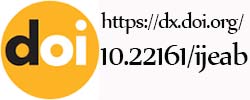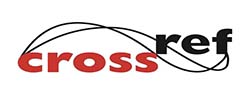Author: Sylvester Morlu Koroma, Akiwande Boyle-Renner, Tamba Bandabla, Fallah Samuel Kassoh, Dauda S. Yillah
![]() DOI: 10.22161/ijeab.76.9
DOI: 10.22161/ijeab.76.9
Keyword: Livestock systems, Small Ruminants, Farmers, Feeds, and forages
Abstract: This survey was conducted to ascertain the demographic attributes of household heads, type of livestock kept, rearing systems, feed resources utilized and also to assess farmer’s knowledge on feed production and conservation. A total of 298 household heads were randomly selected within five districts and interviewed. Results indicated that majority of the households (73.2%) were headed by men with only (26.8%) headed by women. In terms of educational status 54.7% of the household heads did not go to school, while 24.1% attained formal education and (21.2%) attained Koranic education. Data for religion showed that 94.3% of the respondents were Muslims with 5.7% being Christians. Among the households, (95.6%) kept poultry, (89.5%) kept goats, (51.3%) kept sheep, 5% reared cattle, with only 1% keeping pigs and none rearing rabbits or grasscutters. In terms of average numbers of livestock per household; chickens were (12), ducks (4), and guinea fowl (3). Goats were (5), sheep (4) and cattle (5). Management system for poultry, small ruminants and cattle was mostly semi-intensive in the wet season and extensive in the dry season except for pigs which were managed intensively during the rains, and extensively during the dries. Housing provided for poultry was mostly in the form of cages and baskets, with small ruminants mostly housed in sheds and within fenced areas. Cattle were majorly sheltered in paddocks and pigs confined in fenced areas during the rains and left to roam during the dries. Few farmers reported that they do not provide housing for their animals. Most household heads (83.6%) practiced grazing/scavenging as the main source of feeding animals with only (16.4%) practicing zero-grazing. The grasses most browsed by the animals were Panicum maximum (21.5%), Andropogon gayanus (17.1%) and Pennisetum purpureum (10.1%). The legumes; Centrosema pubescens, Pueraria phaseoloides, and Mucuna pruriens were hardly grazed by the animals with values < or = 1.0%. Majority (91%) of the household heads fed their animals with forages, with only (3.4%) providing concentrate and (7.4%) utilizing supplements. None of the famers (N=298) fed their animals with hay or silage as they lacked knowledge on animal feed production. Crop residues were utilized by (30.2%) of the household heads, with cassava leaves residues (77%) the most fed and soybean haulms (17.8%) the least fed. Shortage of animal feed was most severe in the peak of the dry season (February-march), with 75.9% of households feeding their animals on forages during this lean period through the cut and carry method. From this survey, findings indicated that the inclusivity of women in livestock rearing is low, with management systems still traditional and mostly characterized by low numbers of conventional and a total absence of non-conventional livestock. Furthermore, un-balanced feed rations, feed scarcity and lack of technical know-how in compounding and conservation of animal feed was mostly existent.
Article Info: Received: 30 Sep 2021; Received in revised form: 22 Nov 2021; Accepted: 29 Nov 2021; Available online: 06 Dec 2022
| Total View: 499 | Downloads: 703 | Page No: 076-083 |
Cite this Article:
MLA
Sylvester Morlu Koroma, Akiwande Boyle-Renner, Tamba Bandabla, Fallah Samuel Kassoh, Dauda S. Yillah, P.(2022).Livestock Systems and Forage Resources of Small Ruminant Farms in Some Selected Districts in Sierra Leone. International Journal of Environment Agriculture and Biotechnology(ISSN: 2456-1878).7(6), 076-083.10.22161/ijeab.76.9
Sylvester Morlu Koroma, Akiwande Boyle-Renner, Tamba Bandabla, Fallah Samuel Kassoh, Dauda S. Yillah, P.(2022).Livestock Systems and Forage Resources of Small Ruminant Farms in Some Selected Districts in Sierra Leone. International Journal of Environment Agriculture and Biotechnology(ISSN: 2456-1878).7(6), pp.076-083.
Sylvester Morlu Koroma, Akiwande Boyle-Renner, Tamba Bandabla, Fallah Samuel Kassoh, Dauda S. Yillah. 2022."Livestock Systems and Forage Resources of Small Ruminant Farms in Some Selected Districts in Sierra Leone". International Journal of Environment Agriculture and Biotechnology(ISSN: 2456-1878).7(6):076-083.Doi:10.22161/ijeab.76.9
Sylvester Morlu Koroma, Akiwande Boyle-Renner, Tamba Bandabla, Fallah Samuel Kassoh, Dauda S. Yillah."Livestock Systems and Forage Resources of Small Ruminant Farms in Some Selected Districts in Sierra Leone", International Journal of Environment Agriculture and Biotechnology,vol.7,no. 6, pp.076-083,2022.
@article { sylvestermorlukoroma2022livestock,
title={Livestock Systems and Forage Resources of Small Ruminant Farms in Some Selected Districts in Sierra Leone},
author={Sylvester Morlu Koroma, Akiwande Boyle-Renner, Tamba Bandabla, Fallah Samuel Kassoh, Dauda S. Yillah , R},
journal={International Journal of Environment Agriculture and Biotechnology},
volume={7},
year= {2022} ,
}
























